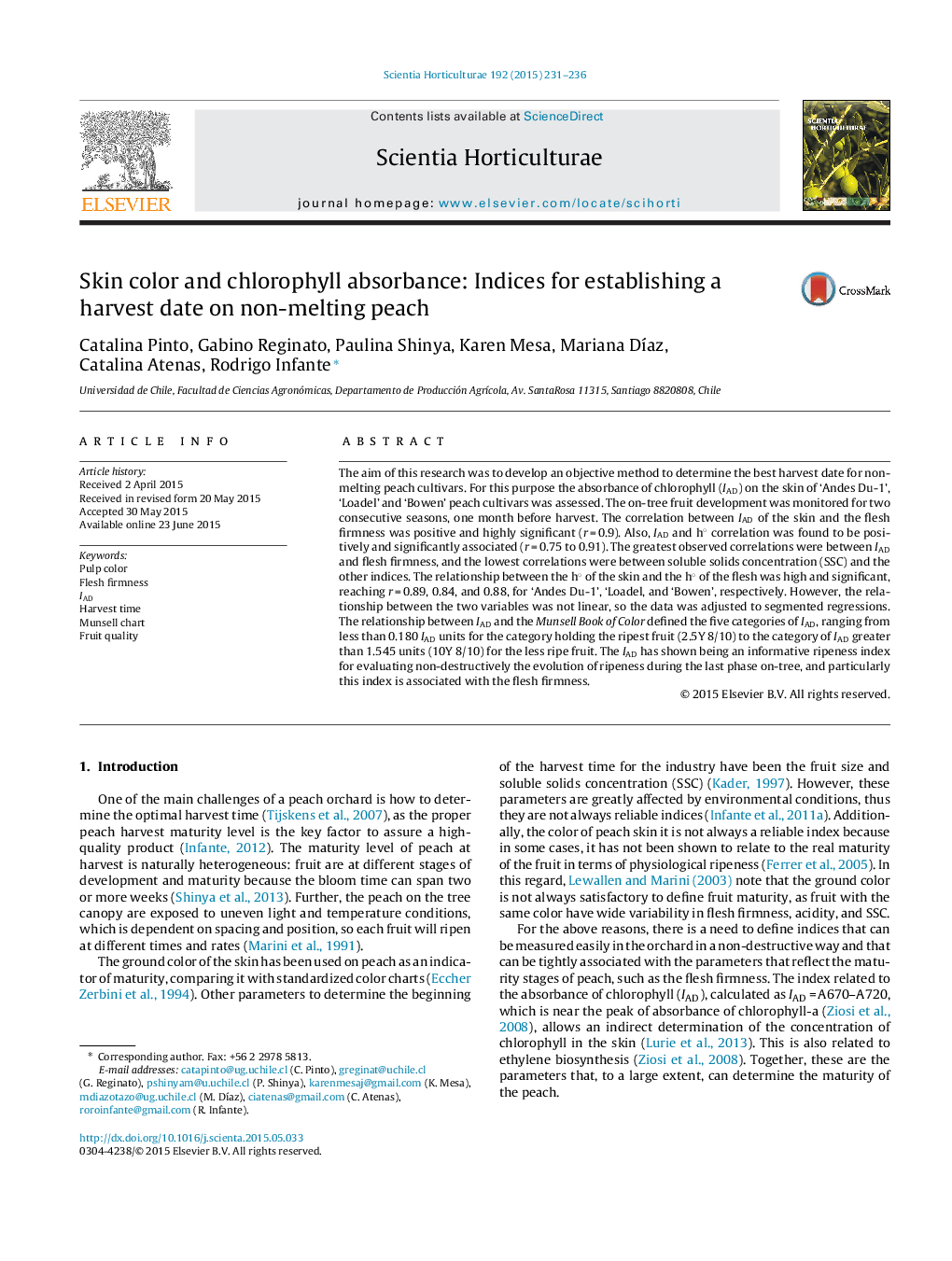| Article ID | Journal | Published Year | Pages | File Type |
|---|---|---|---|---|
| 4566253 | Scientia Horticulturae | 2015 | 6 Pages |
•IAD is a useful index for determining the ripeness level on non-melting fleshed peach.•There is a tight association between IAD of the skin, the flesh firmness and the ground color.•It is possible to associate a range of IAD scores and a color chart for facilitating harvest.
The aim of this research was to develop an objective method to determine the best harvest date for non-melting peach cultivars. For this purpose the absorbance of chlorophyll (IAD) on the skin of ‘Andes Du-1’, ‘Loadel’ and ‘Bowen’ peach cultivars was assessed. The on-tree fruit development was monitored for two consecutive seasons, one month before harvest. The correlation between IAD of the skin and the flesh firmness was positive and highly significant (r = 0.9). Also, IAD and h° correlation was found to be positively and significantly associated (r = 0.75 to 0.91). The greatest observed correlations were between IAD and flesh firmness, and the lowest correlations were between soluble solids concentration (SSC) and the other indices. The relationship between the h° of the skin and the h° of the flesh was high and significant, reaching r = 0.89, 0.84, and 0.88, for ‘Andes Du-1’, ‘Loadel, and ‘Bowen’, respectively. However, the relationship between the two variables was not linear, so the data was adjusted to segmented regressions. The relationship between IAD and the Munsell Book of Color defined the five categories of IAD, ranging from less than 0.180 IAD units for the category holding the ripest fruit (2.5Y 8/10) to the category of IAD greater than 1.545 units (10Y 8/10) for the less ripe fruit. The IAD has shown being an informative ripeness index for evaluating non-destructively the evolution of ripeness during the last phase on-tree, and particularly this index is associated with the flesh firmness.
